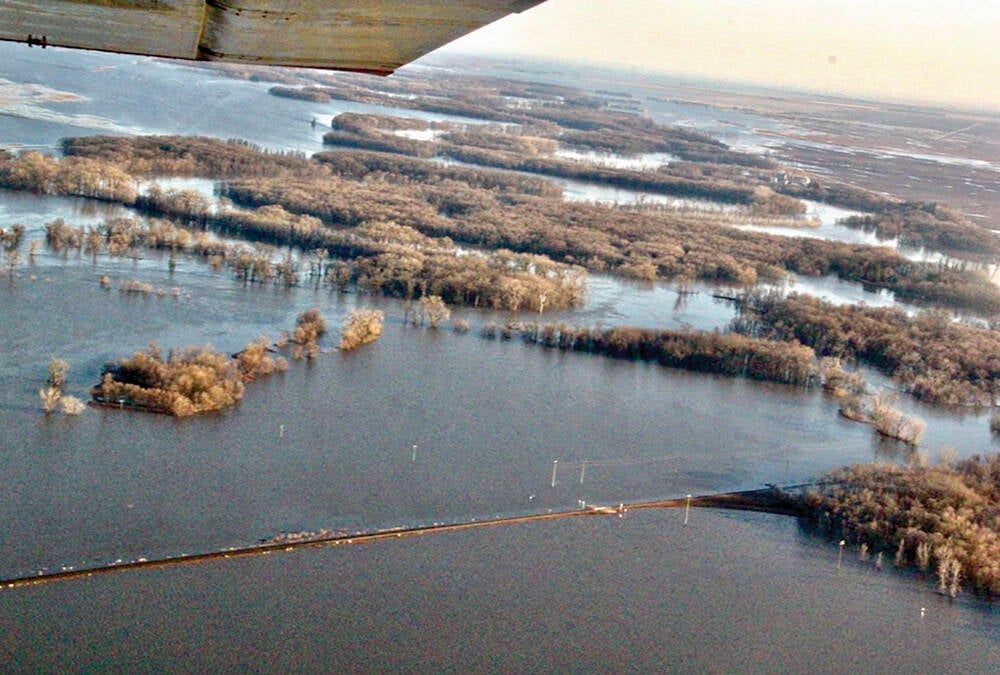The potential risk of a virus carried by sheep and fatal to bison has put two producers in southeastern Saskatchewan in conflict.
Teresa Walker and her daughter, Jo, raisecattleandsheepnearFairlight, Sask.
Rob Johnson, his wife Rebecca, and her father, Ryan Clark, raise up to 2,200 bison in the same area.
Johnson said the chances that malignant catarrhal fever (MCF) could spread from the Walkers’ sheep to his bison have increased now that the Walkers have bought land closer to his place.
The sheep are about a kilometre from the bison compared to the previous four kilometres.
Read Also

Rural Manitoba resources slim on natural disaster planning
A study from Brandon University’s Rural Development Institute has found that many rural and small municipalities don’t have the staff or resources to make formal climate plans against natural disaster.
He said he agrees that the Walkers should be able to do what they want on their land, but not at the expense of someone else.
He has asked the Agricultural Operations Review Board to look at the situation under the Agricultural Operations Act, and the parties have agreed to mediation.
“We’re not denying them a right to farm, but you don’t have the right to bring in a disease and jeopardize someone else,” he said.
Bison are 1,000 times more susceptible to MCF than other ruminants, such as cattle, deer and moose, which can also be affected.
Dr. Wendy Wilkins, a disease surveillance veterinarian with the provincial agriculture ministry, said bison don’t have the immunity that other animals have.
“Treatments have been tried but they tend to prolong the disease. They don’t cure it,” she said.
MCF is thought to be common among sheep in North America. The incidence in bison is not, but it is always fatal. Death can occur suddenly or within a week or several months.
All sheep are considered to be carriers, Wilkins said.
MCF is shed in their nasal secretions and can spread through direct contact and the air.
It has been documented to have occurred up to five kilometres from a 20,000 head sheep feedlot in the United States, where it caused a large number of deaths.
“This did involve very large numbers of sheep and very large numbers of weaned sheep to be specific,” Wilkins said.
She added that weaned sheep are always the culprits, and specifically sheep between the ages of six and nine months because they shed more virus than adults.
Walker said she has told Johnson that she will not have sheep of those ages on the land closest to his bison.
“We sell nearly all our lambs to the eastern market and they’re gone by five months,” she said.
The Walkers have had sheep since moving to the area from England in 2002. Jo Walker is now 19 and expanding her flock.
There are 87 sheep on the new land and another 100 on the home farm. There are also 196 cattle.
Walker said there were also sheep, and more of them, on the land on the other side of Johnson from 1999 to 2008.
Management is critical to keeping bison disease-free, which she said is demonstrated by the lack of problems in the area.
“I am happy to go to mediation,” Walker said. “As any parent, you do everything in your power to make your child happy and be successful.”
The only documented case of MCF in Saskatchewan occurred in 2000 when 45 bison died after being in the same auction barn as sheep.
Wilkins said the theory is that the animals shared a common water source, but that has never been proven.
There have also been two documented cases in moose.
Johnson said he worries bison deaths due to MCF have been under-reported because farmers didn’t want to spend $500 for an autopsy to investigate a sudden death.
He has been told that an MCF outbreak could result in death losses of five to 70 percent per shedding event, which is 50 to 800 animals.
There are now 1,400 bison on the farm.
“That’s really unacceptable to us,” Johnson said.
“People say just let it happen. I find that really inhumane. I have a responsibility to protect my animals.”
Wilkins said she has not been able to find information on the risks posed by a small flock such as Walker’s.
“We’re talking about 87 adult sheep half a mile to three-quarters of a mile (800 metres to 1.2 km) from the nearest bison,” she said. “While I can say the risk is not zero, I cannot put any other number on it.”
She said producers of both species have to be aware of the disease and keep weaned lambs away from bison. She also recommended that stressful management practices such as weaning for both species be done as far from each other as possible.
Bison producers should call their veterinarians for a post-mortem should sudden death occur.
Bison that are new to a herd may have been exposed somewhere else, but if the deaths occur in animals that have never left the farm, there is a possible source of the virus somewhere else.















